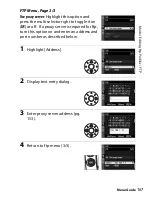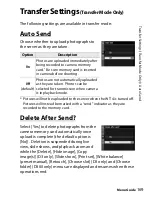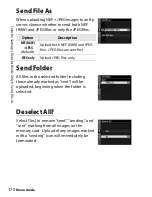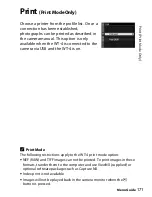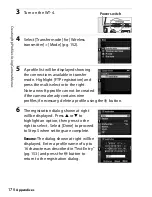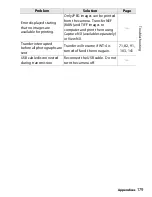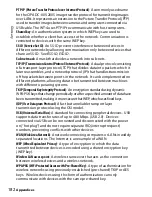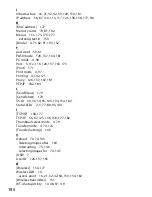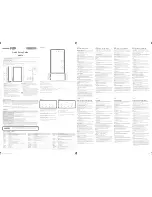
180
G
lossa
ry
Appendices
Glossary
Ad-hoc
: Devices in an ad-hoc wireless network communicate directly (“peer
to peer”), without a wireless access point.
AES (Advanced Encryption Standard)
: An encryption standard developed for use
by the American government. AES has been praised for combining strong
encryption with rapid processing.
Auto IP (APIPA—Automatic Private IP Addressing)
: Allows devices in a network to
automatically assign themselves unique IP addresses if no DHCP server is
found on the network. Auto IP uses addresses from 169.254.1.0 to
169.254.254.255 and a sub-net mask of 255.255.0.0. These addresses are
neither global nor private but are reserved for Auto IP.
BSS-ID (Basic Service Set ID)
: All wireless devices on an ad-hoc wireless network
share the same BSS-ID. The BSS-ID may be up to thirty-two characters
long and is case sensitive. See also Ad-hoc.
Channel
: When multiple wireless LANs with different ESS-IDs are operating
on a single frequency within a given area, transmission speeds will drop.
Specifying a separate channel (frequency) for each network can prevent
interference and increase transmission speeds (note that all devices in the
same network must be set to the same channel). In the IEEE 802.11a
standard, the 5 GHz band is divided into 19 channels, each separated by
20 MHz. In the IEEE 802.11b/g standard, the 2.4 GHz band is divided into
14 channels, each separated by 4 MHz.
DHCP (Dynamic Host Configuration Protocol) Server
: Each device in a TCP/IP
network requires an IP address. If a DHCP server is present on the
network, IP addresses will be assigned automatically.
DNS (Domain Name Server)
: A server that contains a database of IP addresses and
host names for the machines it administers and that converts host names to
IP addresses in response to queries from clients. Each DNS can also query
other Domain Name Servers for addresses not listed in its database.
ESS-ID (Extended Service Set ID)
: Multiple BSSs can be configured to form an ESS,
allowing users to roam between wireless access points. Only devices with the
same ESS-ID as a given access point can communicate with that access point.
The ESS-ID may be up to thirty-two characters long and is case sensitive.
Ethernet
: The name given to the IEEE 802.3 LAN standard. Devices in an
Ethernet network are connected via UTP cables for transmission speeds of
up to 10 Mbps (10 base-T) or 100 Mbps (100 base-TX).
Gateway
: A network node that acts as an entrance to another network, for
example between a company network and the Internet.
Summary of Contents for WT-4
Page 1: ...Wireless Transmitter En User s Manual ...
Page 41: ...Configuring the Network Windows XP Creating an Ad Hoc Network Introduction 29 5 Click Add ...
Page 67: ...55 Copying Network Profiles to the Camera Ad Hoc Networks Using the WT 4 with a Computer ...
Page 136: ...124 Copying Network Profiles to the Camera Ad Hoc Networks Uploading Images to an ftp Server ...
Page 156: ...Connecting to the ftp Server Uploading Images to an ftp Server 144 4 Click Close ...
Page 162: ...Uploading Images Uploading Images to an ftp Server 150 ...
Page 186: ...174 Device Settings Format Transmitter s Memory Menu Guide ...


